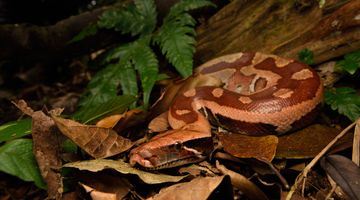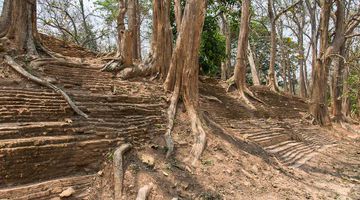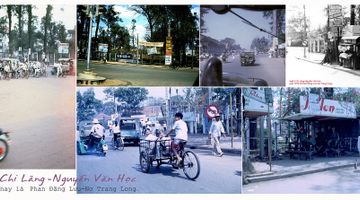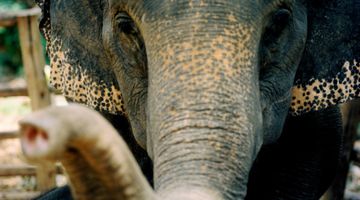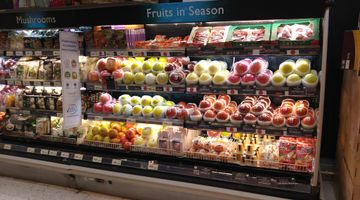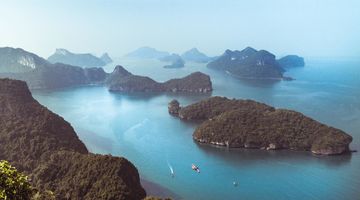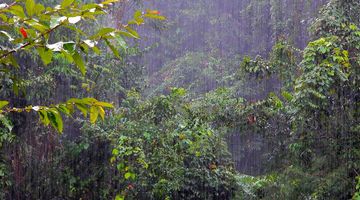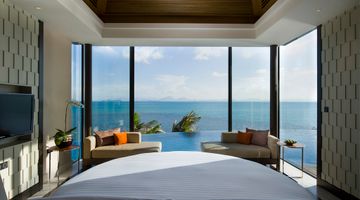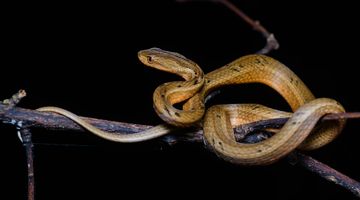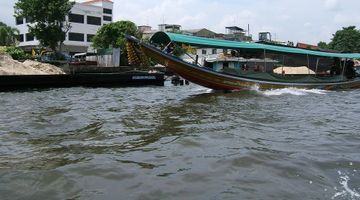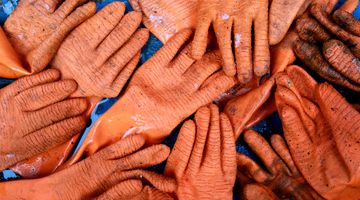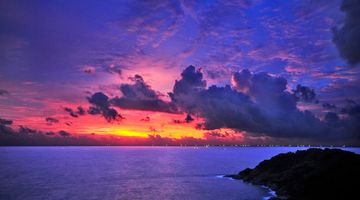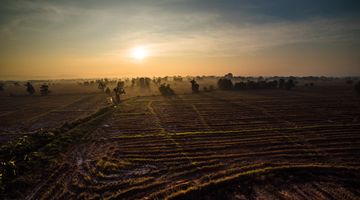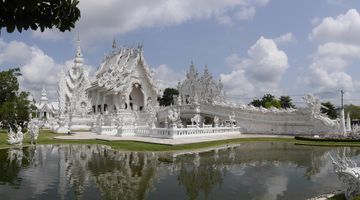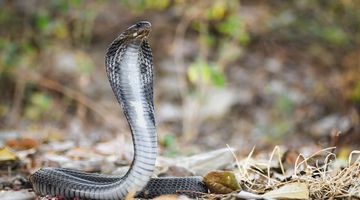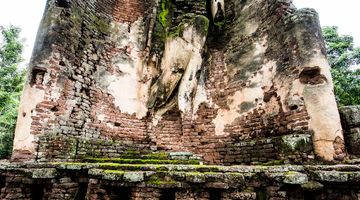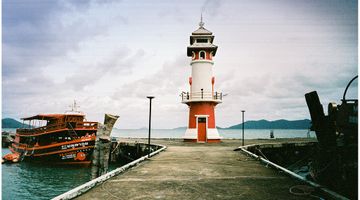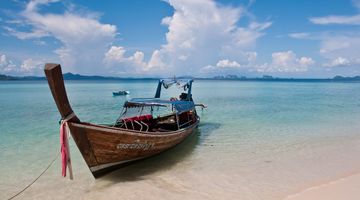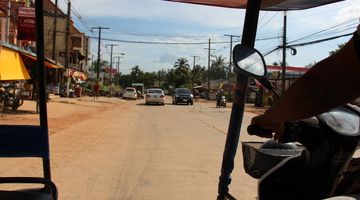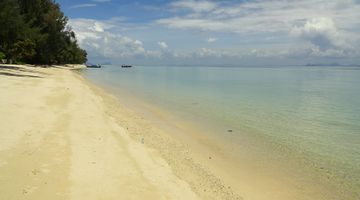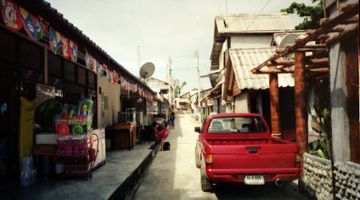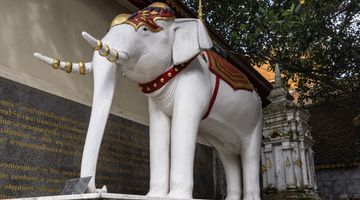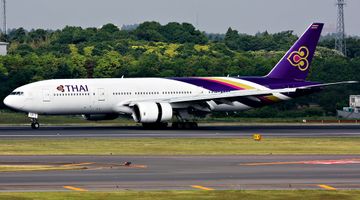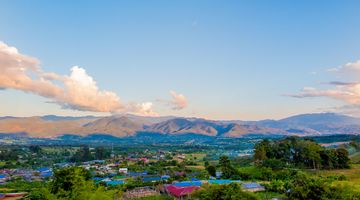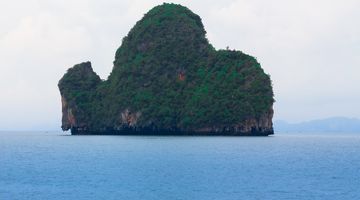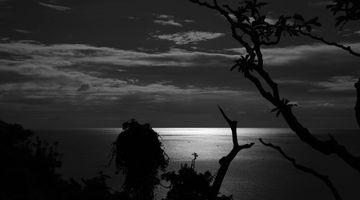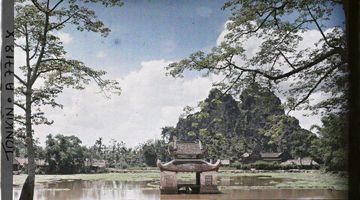Kaeng Krachan National Park Travel Guide
In a nutshell
Covering the western part of Phetchaburi province on the border with Myanmar, Kaeng Krachan is the largest national park in Thailand and one of the richest in wildlife.
Why go to Kaeng Krachan
With almost 3000 sq. km of tropical forests, mountains, rivers and waterfalls, it is the natural habitat for a large population of wild elephants which can be often spotted both in the central and in the southern areas of the park. Bears, leopards and macaques are also quite common, but more difficult to see, while a small population of tigers should still be present even if there has not been any official recording in a long time.
In addition to this Kaeng Krachan is a paradise for bird-watchers, with more than 420 different species living here, and many of them can be easily spotted by an experienced eye.
Kaeng Krachan is divided into three main areas. The northern headquarters with an artificial reservoir being the only attraction there; the southern Pala–U waterfalls area; and the central area of Ban Krang campsite, accessible from Sam Yod entrance, by far the most interesting part of the national park.
From Ban Krang a 20 km dirt road used to take visitors to the farther and even more remote Phanoen Thung campsite, the starting point for tours to the second highest peak in the park. It’s important to notice that the whole Phanoen Thung area is not accessible at the moment of writing (September 2017) because the road leading there is under maintenance and the improvement works will probably last at least a year.
There are rumours that at some point in 2018 the road should be partially reopened during the weekends but for now consider visiting Ban Krang – the western edge of the park still open to public. In this article we do not provide any information about Phanoen Thung – it will be added as soon as the we have more detailed and confirmed information on the reopening dates and the activities on offer.
Opening hours and entrance fee
The entrance ticket of THB300 (THB200) is required for visiting Ban Krang and Pala–U areas, while the northern headquarters are actually outside the park and are accessible free of charge.
The ticket is valid as long as you stay inside the park, so if for any reason you need to exit and re-enter the park, make sure you explain it to the officer at the checkpoint or you’ll be required to buy a new ticket. An extra fee of THB30 must be paid if you enter the park with your car (motorbikes are not allowed).
The Sam Yod checkpoint is open from 5.00am till 5.00pm while Pala–U is open from 8.30am till 4.30pm.
When to go to Kaeng Krachan National Park
The cool and dry season from December till February is the best time of the year to visit for everyone who don’t want to deal with heat, humidity, rain and leeches but it’s also the busiest season, and especially on weekends and public holidays the park could be quite crowded.
The hot season from March until May is generally the best time for bird-watching with several species of migrating birds calling to the park.
In June and July you can expect a bit of rain, but it’s not yet the rainy season in full swing and the nature is even more spectacular than usual.
From August till the end of November the central area accessible through Sam Yod entrance is closed, with Pala–U waterfall being the only attraction in the park to visit.
Where to stay in Kaeng Krachan NP
Campsites can be found in all the three main areas of the park. At the headquarters and near the southern entrance of Pala–U waterfall more comfortable wooden bungalows and private cabins with attached toilettes are also available, while in the central area of Ban Krang a tent is the only option if you want to sleep inside the park.
Located outside the park entrance of the Sam Yod checkpoint a few resorts offer quite simple rooms in a natural setting. More upscale solutions can be found on the road from the northern headquarters to Sam Yod and around the Pala–U entrance, on the road leading to Hua Hin.
Where to eat in Kaeng Krachan NP
Inside the park and close to all the campsites there are restaurants offering the usual dishes that you can find at any Thai eatery: fried rice, curries and pad kaprao (stir fried minced meat with basil leaf) are the most popular ones, but depending on the restaurant more choices might be available. Menus are in English and they usually close at 7.00pm.
The restaurant at Pala–U waterfall may close a lot earlier, especially when there are not many tourists sleeping inside, but it’s easy to find alternatives on the main road to Hua Hin just outside the park.
If you sleep close to the Sam Yod checkpoint you’ll have to rely to your guesthouse or resort for dinner, while at the northern entrance several restaurants can be found close to the reservoir. Giant catfish cooked in different ways is the main dish if you happen to stop here.
How to get around Kaeng Krachan NP
This is where things get a bit complicated unless you have a car. Once you get off the minivan at the northern headquarters you will have to find a way to reach the Sam Yod checkpoint (20 km south) and from there cover the last 15 km to Ban Krang campsite.
The easiest way is to hire a car with a driver at the HQ for the flat rate of THB1200. The price is the same both for a one-way or a round trip on the same day, while it will be higher (THB2000) if you want the car to wait for you and take you back the next day. In this case the driver will camp in Ban Krang too.
Hitchhiking is the only alternative if you’re on a budget. Iit’s quite common to come across a private minibus stopping at the headquarters in the early morning before they move to Ban Krang and if they have space it shouldn’t be a problem to get a lift.
How to get to and from Kaeng Krachan NP
The only public transportation available is the minibus service running hourly from Phetchaburi to the northern headquarters from 8.00am till 7.00pm. A ticket costs THB100 and it takes just over an hour. Check our dedicated article to see how you can reach Phetchaburi from other parts of Thailand.
The easiest way to visit the park is to hire a car. Driving there by yourself is easy, cheaper than taking a taxi, and even from Bangkok it is not a long drive (180 km). Unless you’re really interested in Kaeng Krachan Reservoir, skip the main headquarters on route 3499, and point your GPS to Sam Yod checkpoint on route 3432.
Pala–U waterfall is located at the southern end of the park, a 60 km drive from Hua Hin on route 3218.
If you don’t want to drive, a private taxi from Petchaburi/Hua Hin to Ban Krang should cost you roughly THB1500. Travel agencies in any of these two cities will also be able to arrange private day tours to Ban Krang or Pala–U.
Is Kaeng Krachan NP a safe place to visit?
While Kaeng Krachan Reservoir and Pala–U waterfalls don’t present any particular danger and common sense is the only thing required to guarantee you a safe travel, Ban Krang area is full of wildlife, with elephants and reptiles being the most dangerous animals to be aware of. For this reason it is extremely important not to leave the campsite at nighttime, and always hire a professional guide for your excursions.
